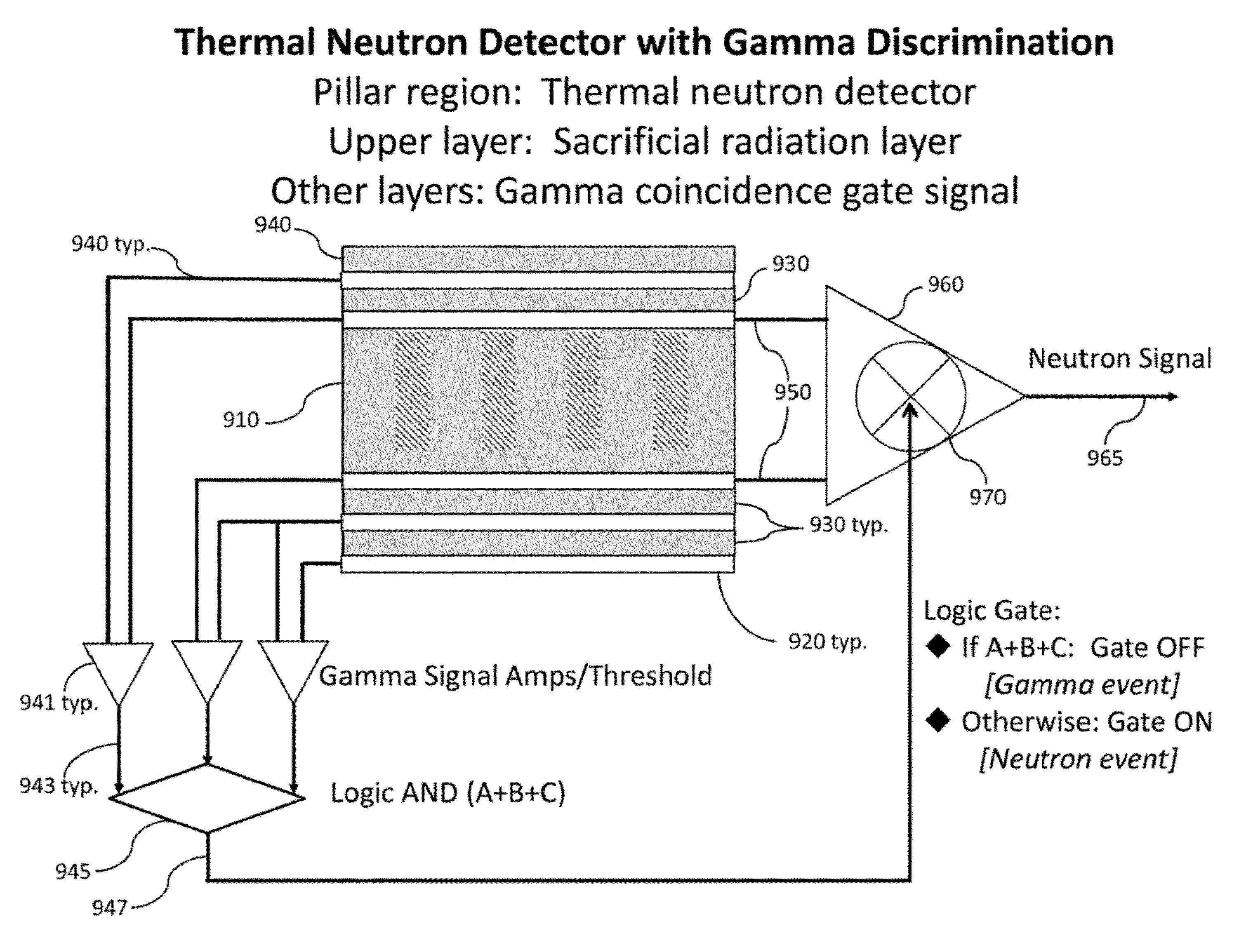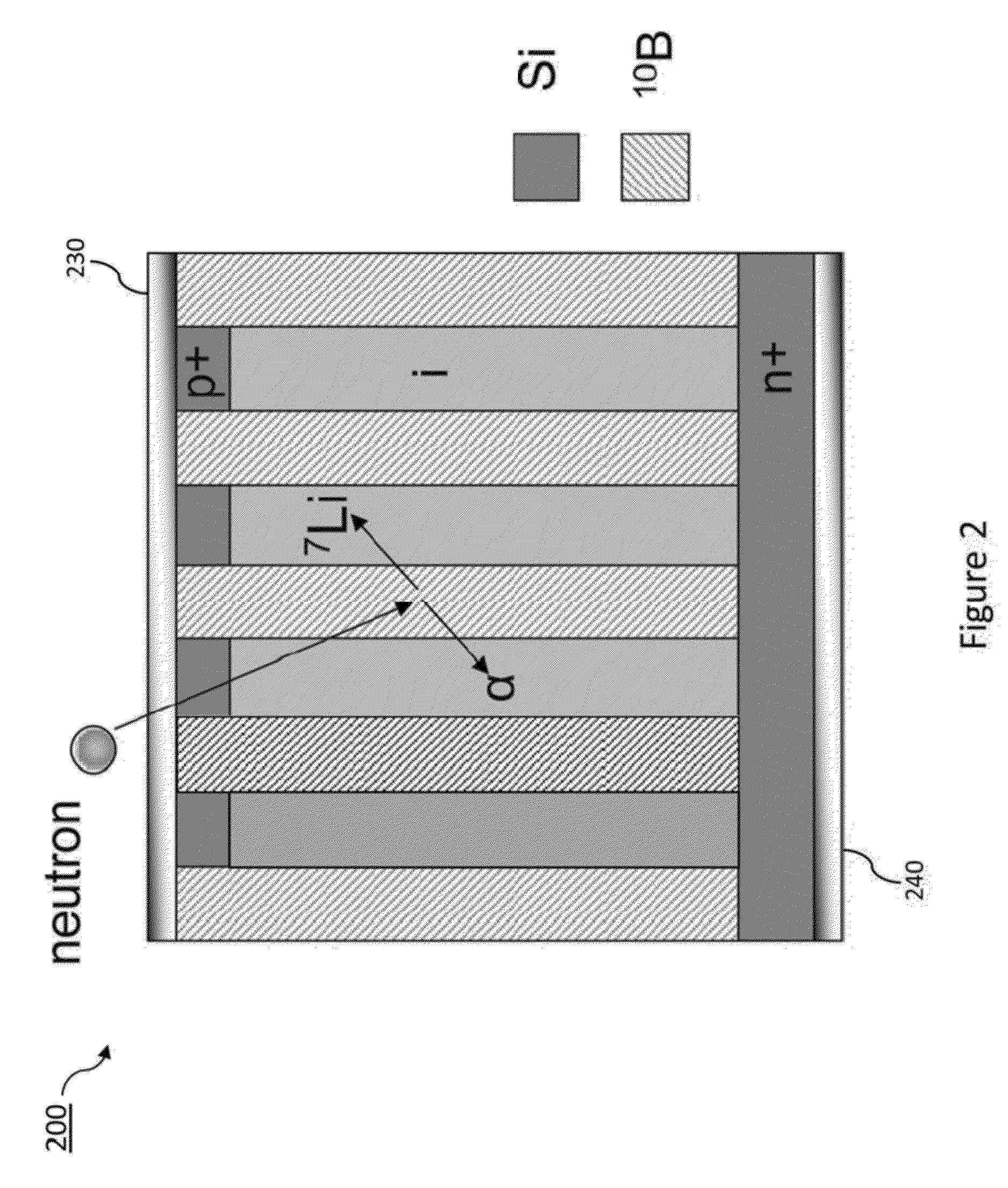Method for manufacturing solid-state thermal neutron detectors with simultaneous high thermal neutron detection efficiency (>50%) and neutron to gamma discrimination (>1.0E4)
a solid-state thermal neutron and detector technology, applied in the direction of material analysis, measurement with semiconductor devices, instruments, etc., can solve the problems of concomitant increase in the response of the detector to gamma ray events, greater false positives and false negatives, etc., to achieve high thermal neutron detection efficiency, increase gamma rejection, and reduce the effect of area
- Summary
- Abstract
- Description
- Claims
- Application Information
AI Technical Summary
Benefits of technology
Problems solved by technology
Method used
Image
Examples
Embodiment Construction
[0059]The platform for thermal neutron detection described herein is based on an array of pillar structured p-i-n semiconductor diodes within which a thermal neutron conversion material, such as 10B, has been interspersed. The salient features of this class of detector are briefly reviewed, followed by embodiments that enhance the detector performance in terms of improved neutron detection sensitivity, concomitant with greater levels of gamma ray discrimination. In the example drawings, the top of the pillar is p+ with n+ as the substrate. The opposite can be done having n+ as the top of the pillar with an p+ substrate. Doping can be done by ion implantation, diffusion or by epitaxial growth. The pillars can be squares, circles, hexagons, etc. While the target design was 50 microns, embodiments of the pillars can be within a broader range, e.g., in the range of 25-100 microns tall.
[0060]A basic pillar-based thermal neutron detector is shown in FIGS. 1A, 1B and 1C. A schematic drawin...
PUM
 Login to View More
Login to View More Abstract
Description
Claims
Application Information
 Login to View More
Login to View More - R&D
- Intellectual Property
- Life Sciences
- Materials
- Tech Scout
- Unparalleled Data Quality
- Higher Quality Content
- 60% Fewer Hallucinations
Browse by: Latest US Patents, China's latest patents, Technical Efficacy Thesaurus, Application Domain, Technology Topic, Popular Technical Reports.
© 2025 PatSnap. All rights reserved.Legal|Privacy policy|Modern Slavery Act Transparency Statement|Sitemap|About US| Contact US: help@patsnap.com



